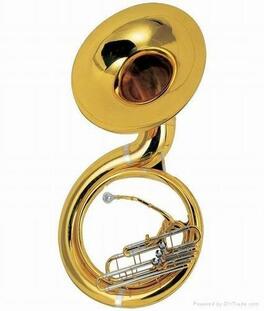Sousa was apprenticed to the Marine Corp band at the age of 13 and given the rank of “boy.” (I kid you not.) His father enlisted him into the Corp to keep him from running off to join a circus band. (An argument could be made that that would have been the better decision.)
Eventually, Sousa became the director of the Marine Corp band and composed some of the best-known and most-beloved marches in the world. I think everyone knows “Stars and Stripes Forever.” We all know its un-official lyrics:
For a duck may be somebody’s mother.
They live all alone in the swim
Where it’s very cold and dim
You may think that this is the end
Well, it is.
I have been told that as a child, my brother had a recording of Sousa marches. One Saturday, he decided to play this album at 6 a.m. Full volume. The album was destroyed by the time I came along. In a touch of irony, Sousa hated recordings and never directed the Marine Corps band when it was recorded. He feared that people’s vocal cords would atrophy from disuse due to recorded music.
Sousa wrote other things besides marches. He wrote operettas. I am shocked. As best as I can tell, of his nine operettas, only one is still occasionally performed: El Capitan. Here is what Wikipedia has to say about the plot (I’m not even going to try to explain this!):
Medigua, still disguised as El Capitan, leads the hapless rebels against the Spaniards, taking them in circles until they are too tired to fight. The Spaniards win, the mistaken identities are revealed, the love stories are untangled after Medigua explains to his wife the flirtation with Estrelda, and the story ends happily.”
Sousa turns out to have been a man of many talents. He also wrote a few books, including his autobiography: Marching Along. He was even an expert trap-shooter! But what we remember John Philip Sousa for the most are his marches. In 1987, “Stars and Stripes Forever” was declared the National March. (I guess it’s not a disaster anymore.)
So, today, be sure to March Forth! (And, do be kind to your web-footed friends!)
Do you have any marching stories? Favorite marches? I’ll be posting some of these on my Minnich Music Facebook page, so check those out.
Until next time!

 RSS Feed
RSS Feed